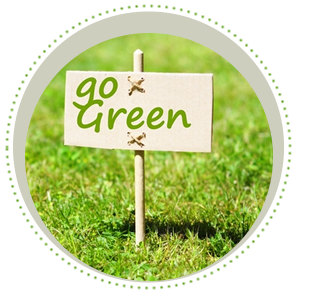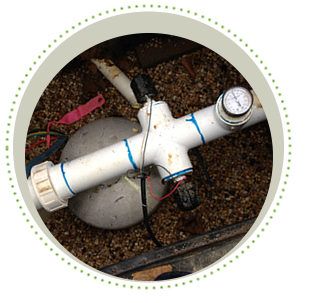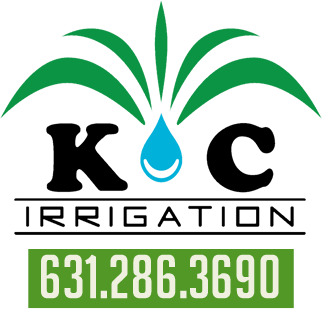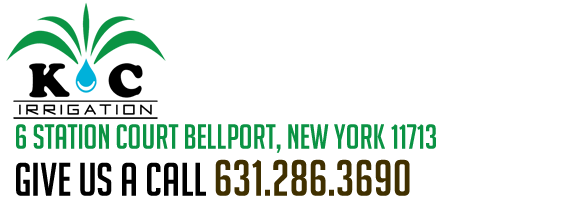
Going Green?
The term Going green has been a hot topic the past couple of years.  Commercial buildings have been converting over to show that they are eco-friendly, that they do care about the environment. Consumers are now curious, wondering is there a savings? Can we make this work for our home? Becoming more aware of how much water they are applying to their landscape. This is an important topic of discussion because of the possible savings on water bills, as well as water conservation. Irrigation professionals are taking courses, and participating in training to install new energy efficient products that will create green systems.
Commercial buildings have been converting over to show that they are eco-friendly, that they do care about the environment. Consumers are now curious, wondering is there a savings? Can we make this work for our home? Becoming more aware of how much water they are applying to their landscape. This is an important topic of discussion because of the possible savings on water bills, as well as water conservation. Irrigation professionals are taking courses, and participating in training to install new energy efficient products that will create green systems.
The Irrigation Association of New York, which K&C Irrigation LLC is a proud member, focuses on education and professionalism in the irrigation industry. Meetings are held regularly and issues are brought to the attention of the New York State legislative committee on contractors that are not properly licensed.
Read More
As we look to conserve water one asks, how can we efficiently collect water from mother nature and reapply it to our landscape? Rain harvesting has been a popular topic of discussion, this process is a fascinating idea.
The basics are, rainwater is collected from the gutters of your house or commercial building. The water is then channeled into a cistern tank. When the Irrigation Time Clock calls for water, (the pump installed) engages and pushes water into your irrigation system. In most cases the cistern tank will not be enough to irrigate your entire property. You will need a back up source, such as, a well with a submersible pump or municipal water to finish irrigating the property.
Please contact K&C Irrigation on this fascinating way to irrigate your property, so we can explain in greater detail. Rain harvesting can also be used on a smaller scale for your planting beds with drip irrigation. With today’s technology, conservation is the key to saving our natural resources here on Long Island.
 Drip Irrigation
Drip Irrigation
Drip irrigation supports us in other eco-friendly ways such as, reducing runoff on hardscaped areas thus keeping plant tissue dry and causing the plant to thrive better with less disease. Weeds are kept to a minimum in bed locations, and water is used more efficiently with less evaporation.
K&C Irrigation chooses to use Netafim products for their durability. Water is passed through the product slowly and evenly delivering water right to the source. This allows the plant to maintain a balance of water and oxygen. When installing drip irrigation, plant sizes should be taken into consideration, by grouping similar sizes together. Plant material such as annuals or ground cover will need less frequent but shallow watering. Larger trees will need deep watering less frequently.
Read More
Look to install zones separately, if there are plants in the shade and sun. These plants will need different watering requirements. Permanent plants such as shrubs or trees should not be on the same drip irrigation zone as plants that are seasonal. Flower pots and larger containers should have there own micro drip irrigation zone. Since they have a root system that is tightly packed within the container that will dry out more quickly. Drip irrigation works well on slopes. Rotors and sprays tend to have run off, whereas drip irrigation has a slow gradual release rate to percolate into the soil. Drip irrigation tubing is not the prettiest material to look at, so often it is buried under mulch. This process is ok, it will not clog drip emitters. Drip can also be installed above ground, this is seen usually in green houses, wineries and so on. It is to be hoped that by reading this short article, you will have a better understanding of how this product is being used in the irrigation industry. If you have any questions, I would be more than happy to answer them. Email us at Kirk@kcirrigation.com.
Submersible Pumps

Submersible pumps have become very popular for irrigation professionals. Depending upon horsepower, these pumps can deliver large amounts of water at a high psi. Usually, the pumps are buried about 18 to 24 inches below grade and a large valve box is placed around them. The pump is then hard wired, with a pump start relay, and hooked up to an Irrigation main.
Submersible pumps are installed underground, including the motor. The pump is
 shaped like a long cylinder that fits down inside of the well casing. Other methods of installation are also available but not necessary to talk about in this article. Submersible pumps do not need to be primed since, they are already underwater. Making it easier for the Irrigation Contractor to flip the switch and have water. Older centrifugal pumps need to be primed, by filling the intake pipe with water and turning the pump on. Most of the time, this is not a simple process. It can be time consuming and frustrating. Submersibles are great because, they only push the water they do not need to suck water into them.
shaped like a long cylinder that fits down inside of the well casing. Other methods of installation are also available but not necessary to talk about in this article. Submersible pumps do not need to be primed since, they are already underwater. Making it easier for the Irrigation Contractor to flip the switch and have water. Older centrifugal pumps need to be primed, by filling the intake pipe with water and turning the pump on. Most of the time, this is not a simple process. It can be time consuming and frustrating. Submersibles are great because, they only push the water they do not need to suck water into them.Read More
Over the years K&C Irrigation has installed many submersible pumps on large estates throughout the Suffolk County area. Variable speed wells are the new cutting edge of technology. The pumps have small tanks off the side of them, which enables you to keep the irrigation system pressurized. A variable speed submersible pump will speed up the motor when, more water and pressure is needed and slows the speed down when less water at the set psi is needed. This works out great, if you need a specific zone on the estate that does not require as much water as another area. Both variable and straight submersible pumps are great to use. They run much quieter then the older centrifugal pumps, making them a big seller for residential properties. For large estate homes, the pumps are a key necessity for watering the landscape. Rather then having irrigation run all hours of the night, the pumps deliver large amounts of water, cutting run times for zones in half. Drawing natural water from the ground and reapplying it to the landscape, is more eco-friendly for our Long Island environment. .

















